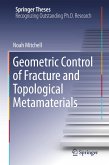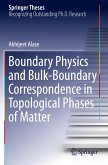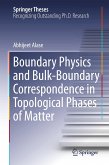This thesis reports a rare combination of experiment and theory on the role of geometry in materials science. It is built on two significant findings: that curvature can be used to guide crack paths in a predictive way, and that protected topological order can exist in amorphous materials. In each, the underlying geometry controls the elastic behavior of quasi-2D materials, enabling the control of crack propagation in elastic sheets and the control of unidirectional waves traveling at the boundary of metamaterials. The thesis examines the consequences of this geometric control in a range of materials spanning many orders of magnitude in length scale, from amorphous macroscopic networks and elastic continua to nanoscale lattices.
Bitte wählen Sie Ihr Anliegen aus.
Rechnungen
Retourenschein anfordern
Bestellstatus
Storno









